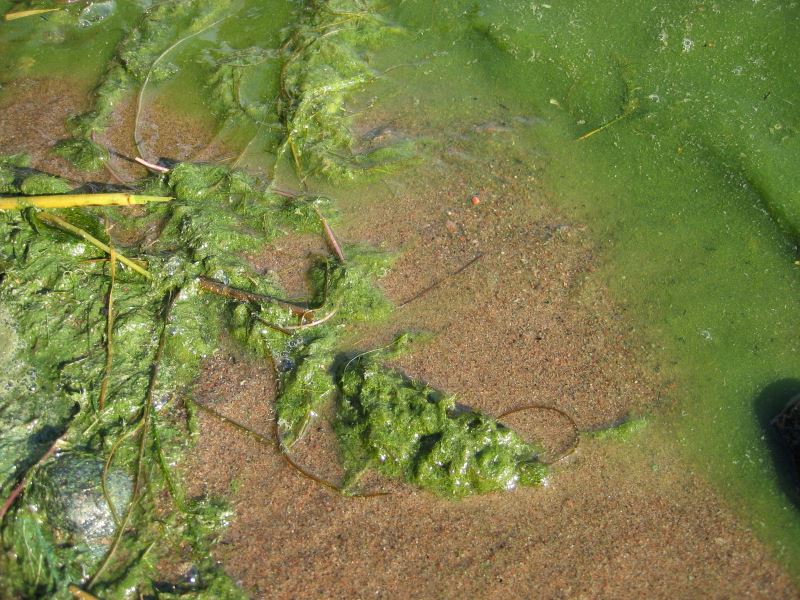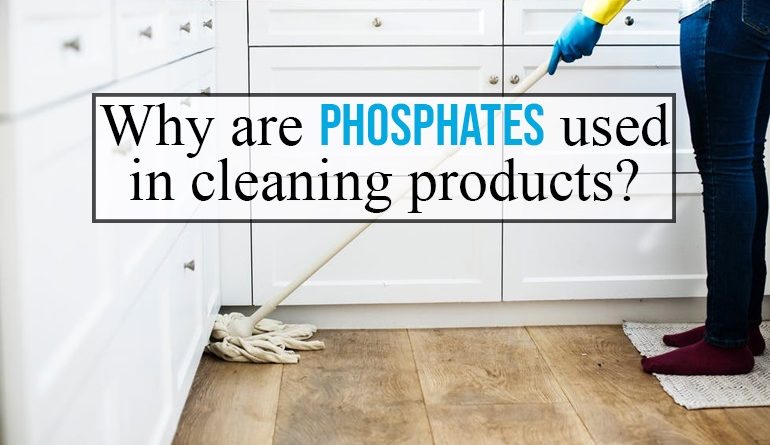Safe Household Cleaning is reader-supported. All reviews are independent and any products reviewed are purchased by the site owner. To help fund this model, some of the links on the site are affiliate links. If you decide to make a purchase from one of these links, this site will receive some commission. At no cost to you. It helps keeps this place running. Learn more
“Phosphate free” is possibly the most widely used claim I’ve seen on cleaning products over the last year.
But what exactly are phosphates? Why are they used in cleaning products? And why are so many companies so proud to be phosphate free?
We’re about to find out…
What are phosphates?
Phosphates have a long history of use in both commercial and household cleaning products. Since the 1950s, ‘sodium tripolyphosphate’ has widely been added to improve the cleaning power of detergents. Concerns were first raised about the accumulation of phosphates in natural water sources in the 60s, and efforts made to reduce their use [1].
Almost 60 years later, most cleaning products in stores are branded ‘phosphate-free’. Have phosphates been eliminated, or has the issue just been surpassed by more imminent ecological disasters (e.g. loss of coral reefs, climate change)?
Why are phosphates added to cleaning products?
Phosphates are primarily used as ‘builders’ (or ‘chelating agents’) in laundry or dishwashing detergents. They help to soften hard water. They do this by preventing calcium and magnesium ions in tap water from binding with surfactants [2]. This has two main benefits:
- Less ‘soap scum’ – Calcium or magnesium in water bind to surfactants (‘soap’), forming an insoluble ‘scum’. This can stick to clothes or hair. Phosphates bind to calcium or magnesium, forming a soluble molecule that just washes away.
- Improved cleaning – Less surfactant is lost as ‘soap scum’, so smaller quantities can be used (useful for those with sensitive skin) and the product cleans more efficiently.=
How dangerous are phosphates?
In theory, it seems logical to add phosphates to cleaning products. So, they were – in huge quantities. In the 1960s, after years of phosphates washing down peoples drains, researchers started to notice accumulation in natural water sources and a correlation with excessive algae blooms.
This led to numerous investigations into the risks:
- Health Effects
Phosphates are poorly absorbed by humans, and the quantities needed to cause toxicity border on impossible [3]. The molecules may not be directly toxic, but they can cause mild irritation (although less than other molecules commonly found in detergents).
When phosphate accumulation was first observed, there was concern about the long-term effects on health – even if not directly toxic in the short-term. High-dose animal studies showed phosphates are well-tolerated in the long-term. Phosphates are not considered toxic, carcinogenic, teratogenic (harmful to unborn infants), or sensitizing [4].
- Environmental Effects
The key chemistry of phosphates is the bond with carbon (C–P). This is resistant to biodegradation, and so the molecules persist in the environment. As the molecules are also soluble, they accumulate in lakes and rivers [5].
Phosphates are well-tolerated by aquatic animals, much like humans. The harmful effects arise from a process known as ‘eutrophication’. This is where excessive nutrients lead to an exponential increase in algae population. The resulting algal blooms deplete aquatic oxygen supply, dramatically altering the ecosystem [6].
Recent examples include:
- Port Phillip Bay, Melbourne, Australia (1987)
- Baltic Sea (1980s – current)
- Gulf of Maine (2000s – current)

© Païvi Rosqvist/WWF-Finland
[Note: Phosphates are only contributory to eutrophication, and many factors including agricultural fertilizers play a role.]
Are phosphates even legal?
Despite the harmful effects of eutrophication on the environment, phosphates are still found in detergents. In Western countries their use in household products has substantially reduced from a peak in the 1950-60s but are still permitted to varying degrees [7, 8]:
- Australia: Has the weakest legislation among developed countries. There is no legal requirement to limit phosphate content in detergents, and reduction is voluntary.
- Canada: In 2011 passed legislation reducing permitted phosphate content in detergents to 0.5%. Industrial detergents were not affected, still limited to 2.2%.
- EU: Prior to 2012, member states set their own limits. With the introduction of Reg. 259/2012, EU members agreed to limit detergent phosphate to 0.5g per cycle.
- US: 17 states have banned the use of phosphate in detergents, and the EPA sets voluntary limits. In effect, this has banned phosphate detergents in North America.
How to avoid phosphates?
The only way to avoid phosphate detergents in countries with weaker legislation is to buy ‘phosphate-free’ detergents. This term is not regulated and relies on manufacturers testing their products for contaminants (just ‘not adding phosphate’ does not make a detergent ‘phosphate-free’).
In Summary
Phosphates are added to cleaning products to help reduce the formation of soap scum. They are not considered harmful to human health, but can accumulate in lakes and rivers, causing devastating algal bloom (‘eutrophication’). The US has the strongest phosphate regulation, with other countries limiting their use to varying degrees. In most countries, the only way to reliably avoid phosphates is to buy ‘phosphate-free’ detergents.
References
[1] McGucken, W. (2000). Lake Erie Rehabilitated: Controlling Cultural Eutrophication 1960s-1990s. University of Akron Press.
[2] Yangxin, Y. U., Jin, Z., & Bayly, A. E. (2008). Development of surfactants and builders in detergent formulations. Chinese Journal of Chemical Engineering, 16(4), 517-527.
[3] Köhler, J. (2006). Detergent phosphates: an EU policy assessment.
[4] Berth, P., Jakobi, G., Schmadel, E., Schwuger, M. J., & Krauch, C. H. (1975). The replacement of phosphates in detergents—possibilities and limits. Angewandte Chemie International Edition in English, 14(2), 94-102.
[5] Holtan, H., Kamp-Nielsen, L., & Stuanes, A. O. (1988). Phosphorus in soil, water and sediment: an overview. In Phosphorus in freshwater ecosystems (pp. 19-34). Springer, Dordrecht.
[6] Correll, D. L. (1998). The role of phosphorus in the eutrophication of receiving waters: a review. Journal of Environmental Quality, 27(2), 261-266.
[7] Showell, M. S. (2017). Powdered detergents. Powdered Detergents (pp. 13-32). Routledge.
[8] Agbazue, V. E., Ekere, N. R., & Shaibu, Y. (2015). Assessment of the levels of phosphate in detergents samples. Int J Chem Sci, 13, 771-785.



One Response
I don’t prefer to use Phosphates for home cleaning. I am not sure that Phosphates can be safe for our health.